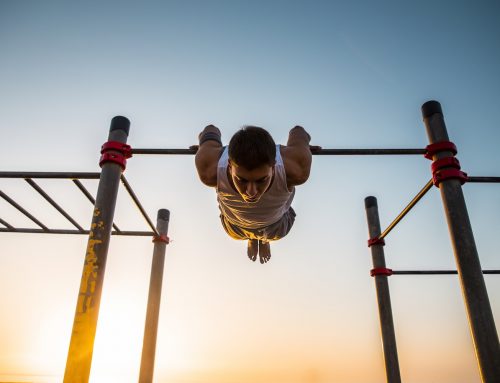
Handstands can seem intimidating, especially if you’ve never tried one before. But with the right approach and mindset, anyone can learn how to do a handstand. It’s not just about strength or balance—it’s about persistence, practice, and gradual progress. Whether you’re looking to boost your fitness routine or conquer a new skill, this guide will help you go from zero to hero in your handstand journey, even if you’re a complete beginner.

Understanding the Basics of Handstands
A handstand is an exercise that requires full-body engagement. While it’s easy to think of it as just balancing on your hands, in reality, a successful handstand involves muscles throughout your entire body—especially your shoulders, core, and legs. Beyond the obvious strength component, handstands also enhance balance, coordination, and body awareness.
The Benefits of Handstands
- Full-Body Strength: Handstands activate muscles from your shoulders down to your toes, including your core, glutes, and legs. Over time, handstand practice builds strength in these areas.
- Balance and Coordination: Holding a handstand requires fine motor control and balance, improving your overall coordination.
- Core Stability: A strong core is essential for handstands, and practicing it will significantly improve your core stability.
Handstands are also an incredible mental challenge. Learning to balance upside down forces you to focus, overcome fears, and be patient with your progress. Mastering a handstand isn’t something that happens overnight, and that’s okay. Patience and consistency are crucial in this journey.
Building the Foundation: Essential Strength and Mobility Exercises
Before diving into handstands, it’s important to build a strong foundation. This involves strengthening the key muscles that support your body while inverted, as well as improving your mobility, especially in your shoulders and wrists.
Key Muscles Involved in Handstands
- Shoulders: Your shoulders bear most of your body’s weight in a handstand. Strengthening them is crucial for stability and control.
- Wrists: Supporting your entire body on your hands puts a lot of strain on your wrists. Mobility and strength in your wrists are essential to avoid injury.
- Core: A strong core helps you maintain a straight body line, which is key to balancing in a handstand.
- Glutes and Legs: Engaging your glutes and legs helps you stay in alignment, preventing your lower body from sagging or arching.
Essential Exercises

Here are a few beginner-friendly exercises to help build the strength and mobility you need for handstands:
- Planks: Planks are an excellent way to build core stability, which is vital for holding a straight handstand. Aim for 3 sets of 30 seconds to 1 minute.
- Wall Walks: Start in a plank position with your feet against the wall. Slowly walk your feet up the wall and your hands toward the wall until you’re in a handstand position. This exercise strengthens your shoulders and familiarizes you with the inverted position.
- Wrist Mobility Drills: Before practicing handstands, warm up your wrists with mobility drills like wrist circles and gentle stretches. This helps prevent injury and improves your ability to support your weight on your hands.
By incorporating these exercises into your routine, you’ll develop the strength and mobility needed to safely progress to more advanced handstand training.
Overcoming the Fear of Being Upside Down
One of the most common obstacles for beginners is the fear of being upside down. The idea of flipping your body over and balancing on your hands can feel intimidating. However, this fear is normal and can be overcome with gradual exposure and mental preparation.

Tips to Mentally Prepare for Inversion
- Start Small: Begin with exercises that gradually introduce you to being upside down, such as headstands or wall-assisted handstands. These help you get used to the sensation of inversion without requiring full arm support.
- Breathe and Relax: When you’re upside down, it’s easy to tense up. Focus on taking deep, controlled breaths to help your body relax. Calm breathing can also reduce anxiety and improve your ability to balance.
Techniques for Safely Exiting a Handstand
Fear of falling often prevents people from fully committing to a handstand. Learning safe exit techniques can reduce this fear:
- Forward Roll: If you feel yourself tipping forward, tuck your head and perform a gentle forward roll to safely exit the handstand.
- Stepping Down: If you lose balance, practice stepping one hand off the ground and using your feet to catch yourself. This prevents falls and builds confidence in your ability to recover from mistakes.
Progressions: Step-by-Step to Your First Handstand
Learning to handstand is all about progressions. Instead of jumping straight into a freestanding handstand, break the process down into smaller, manageable steps. This gradual approach helps build your strength and confidence without overwhelming you.

Step 1: Wall-Assisted Handstands
Wall-assisted handstands are the perfect starting point for beginners. The wall provides support while you work on your alignment, strength, and balance.
- Facing the Wall: Start in a plank position with your feet against the wall. Slowly walk your feet up the wall while bringing your hands closer to the wall. Focus on maintaining a straight body line and holding the position for 10-30 seconds.
- Back to the Wall: Once you’re comfortable, try kicking up into a handstand with your back against the wall. This position mimics a freestanding handstand while providing safety and stability. Hold for as long as you can, gradually increasing your time.
Step 2: Tuck Handstands (With Spotter or Wall Support)
The next progression is the tuck handstand. In this position, your legs are bent and tucked into your chest, creating a more compact shape that’s easier to control than a full handstand.
- With Wall Support: Start in a wall-assisted handstand (back to the wall), then bring your knees into your chest, forming a tuck position. Hold this compact shape, focusing on balance and core engagement.
- With a Spotter: If you have a training partner, they can assist by holding your legs as you kick up into a tuck handstand. The spotter can help you maintain balance while you focus on form and control.
Step 3: Freestanding Handstands
Once you’re confident with wall-assisted and tuck handstands, it’s time to try freestanding handstands. This is where everything comes together—balance, strength, and mental focus.
- Kick-Up to Freestanding Handstand: Start by kicking up into a freestanding handstand. Focus on using just enough force to get your legs overhead without overshooting. Practice against a wall if needed, gradually moving away as your balance improves.
- Frog Stand to Handstand: Another approach is transitioning from a frog stand (balancing with knees on triceps) to a handstand. This slow progression allows for better control and helps you develop balance as you lift your legs.
Common Beginner Mistakes and How to Avoid Them
Even with consistent practice, beginners often make common mistakes that can hinder progress or lead to frustration. Recognizing and correcting these mistakes early will help you improve more quickly.
Arching the Back (Banana Back)
Many beginners arch their back while in a handstand, creating a banana shape that makes balancing difficult and puts strain on the spine.
- How to Fix It: Engage your core and glutes to keep your body in a straight line. Focus on tucking your pelvis under slightly and pulling your ribs in. Wall-assisted handstands can help you practice proper alignment.
Not Engaging the Core
Without engaging the core, your body loses stability, making it harder to balance in a handstand.
- How to Fix It: Actively engage your core muscles throughout the handstand. Think about tightening your abs as if bracing for a punch. Strengthening your core with planks and hollow body holds will also help.
Improper Wrist Positioning
Incorrect wrist positioning can lead to discomfort or injury. Beginners often place too much weight on the heels of their hands or allow their wrists to collapse.
- How to Fix It: Spread your fingers wide and press evenly through your palms, focusing on distributing weight through your fingertips. Incorporate wrist mobility exercises to build strength and flexibility.
Kicking Up with Too Much Force
Using too much force when kicking up into a handstand can cause you to overshoot and lose balance.
- How to Fix It: Practice controlled kick-ups with just enough power to lift your legs into position. Aim for a smooth, gradual movement, focusing on control rather than force.
Holding Your Breath
Holding your breath while attempting a handstand can create tension and make it harder to stay balanced.
- How to Fix It: Maintain steady, controlled breathing throughout the handstand. Focus on deep, calm breaths to help your body relax and balance more effectively.
Practice Tips and Next Steps
Consistency is key when learning handstands. Aim to practice 3-4 times a week, focusing on form rather than duration. A little practice every day can lead to significant improvements over time.
Recommended Practice Routine
- Warm-Up (5-10 minutes): Start with wrist mobility drills, shoulder stretches, and core activation exercises.
- Strength & Mobility Drills (10-15 minutes): Incorporate wall walks, planks, and other foundational exercises.
- Handstand Practice (15-20 minutes): Focus on progressions—wall-assisted handstands, tuck handstands, and freestanding handstands.
- Cool-Down (5 minutes): Stretch your wrists, shoulders, and core to aid recovery.
Track Your Progress
Keeping a journal or recording videos of your practice sessions can help you track progress and identify areas for improvement. Celebrate small victories, like holding a handstand for a few seconds longer or improving your form.
Advanced Goals
Once you’ve mastered the basics, set new goals to challenge yourself:
- Freestanding Handstands: Hold a freestanding handstand for 30+ seconds.
- Handstand Push-Ups: Build strength and control by adding push-ups to your handstand practice.
- Handstand Walking: Test your balance and coordination by walking on your hands.
Conclusion
Mastering handstands is a rewarding journey that requires dedication, patience, and consistent practice. Celebrate your progress along the way, no matter how small, and enjoy the process of developing a challenging new skill. Remember, each practice session brings you one step closer to your handstand goals.
To support you on this journey, the Caliverse app offers a 4-level Handstand Workout Plan, guiding you from beginner to advanced over 8 weeks with 3 workouts per week. Whether you’re just starting or refining your skills, these programs will help you achieve your handstand goals. Download the app today and start your handstand journey with confidence!

About the author : Reinis Ludboržs




